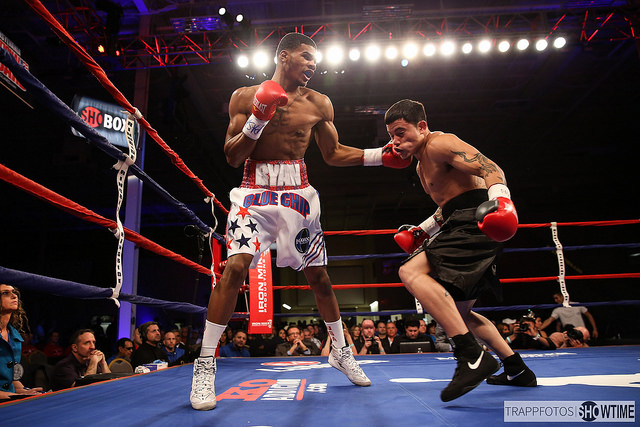
A client sent us this piece a couple of weeks ago. It made a connection with him – and us – shining a light on one of the biggest problems we all face every day.
We ARE our own worst enemy.
We get wrapped up in the weeds, the daily battles, the fires that are right in front of us. We tackle each day hour-by-hour…minute-by-minute…meeting-to-meeting. Never allowing a second to take in the bigger picture.
We just don’t have time, and making time is looked down upon.
Here are 3 ideas to help you stop fighting the fires right in front of you so you can focus on the source of the blaze.
IDEA 1: Get Sticky. Use sticky notes to capture the fires you deal with every day for a week. Caution: Doing this is eye-opening…you’ll probably be surprised how many issues you’re really dealing with every day.
Step 1: Capture ONE fire or problem per sticky note. If you knock out a problem during a conference call, capture the problem on a sticky note. If three problems, challenges, or roadblocks come up during a meeting, capture each on a sticky note.
Step 2: Put all the sticky notes up on your wall, window, or whiteboard – it doesn’t matter where you post them as long as you can see them all at the same time.
Step 3: Read the Tea Leaves. Take a few steps back from your display (yes, literally, take 2-3 steps back) and look at all the sticky notes. Start reading each one as you scan from left to right. Allow your brain to see the patterns that exist.
Step 4: Group related sticky notes together. If three problems occurred because a machine went down, group them together. If five problems popped up because a team member left unexpectedly, group them together.
Step 5: Find the source and take action. What’s the one thing all these smaller issues and problems share? Find this, and get rid of it – eliminating problems big and small once and for all.
Unsure if this will work? Or, maybe you’re thinking it’s not worth the time… Visionary leaders like Steve Jobs and Michael Dell have used this approach to fuel their success throughout their careers. Jobs tapped his ability to put patterns together and predict trends using meditation. Dell uses the sticky note method (outlined above) to help his more logical/rational brain make the connections.
IDEA 2: Tackle one BIG thing every day. Let’s face it – the little stuff is great. It’s easy to dive in to, it makes you feel good because you are getting stuff done, and it’s easier to fit into your “always available” schedule.
Charles Schwab takes a different approach to his days, and it pays off in big ways. Schwab takes 15 minutes at the end of each day to write down the 5 most important things he must get done the next day. He then puts the most important action in the #1 spot.
When he returns the next day, he knows exactly where to start his day…and does nothing else until that most important action is complete. If it takes him all day, that’s fine. He moves the remaining 4 items to the next day, adds a fifth, marks one as most important, and begins again.
It’s effective because it’s a process. It’s great because it allows you to get in a rhythm (which our brains really like), to prioritize your most important work, and drive action not activity.
IDEA 3: Define your time. We know this is best, but making it happen is a real challenge. (It’s kinda like eating healthy…we know it’s best, but making healthy choices all day, every day is challenging for many.) Here are a few simple changes you can make that can make a big difference:
- Schedule your most important action items to begin 2 hours after you wake. Why? This is when our brains are at their best. Continue to align actions that require a lot of thought with your other high energy times throughout your day. Do the same with low energy times and activities…which brings us to
- Deal with email TWICE a day. Emailing is a low energy activity – one that doesn’t require intense thought for a long time. Match up your email times with your low energy times. 10a and 3p are low energy times for many people, making them good starting points.
- Work for 52 minutes without stopping/interruption, then take a break for 17 minutes. The research is pretty clear here – people who follow this approach are more productive, more focused, and more creative. Get your timer ready and give it a go..see if you get more done by making this one simple change.
- Check for alignment. Do your actions support your goals? 80% or more of most people’s daily work actions do not align with their stated goals. Check all your actions by asking, “will what I’m about to do get me closer to achieving my goals?” If the answer is “yes,” keep going. If not, well, you know what to do.
Our brain is a powerful super-computer – making more than 35,000 decisions every day (more than 225* of these are about food alone according to researchers from Cornell). Why do we focus on the little things? Because the little things used to save our lives. A twitch of a leaf, or a new scent could indicate a predator. Constantly scanning the woods helped us find the safest path. But today, these old brain patterns often cause more harm than good.
Why are we so often our own worst enemy? Because we’re hard-wired to make lots of little decisions based on the information we have, and that’s exactly what your brain will do all day, every day…unless you take action to change your brain game.
Have tips and ideas for focusing on big issues instead of little actions? Share them in the comments. We’re always looking for ways to improve!
*Research Citation: Wansink, Brian and Jeffrey Sobal (2007), “Mindless Eating: The 200 Daily Food Decisions We Overlook,” Environment and Behavior 39:1, 106-123
OTHER ARTICLES YOU MIGHT FIND INTERESTING:
5 Reasons Managing All-Stars Can Be A Major League Pain…And What To Do About It
You Are Not Made To Be Fearful
3 People Problems Great Leaders Master
4C Experiences Positive, Lasting Change
The REAL War for Talent – Are You Battle Ready?








